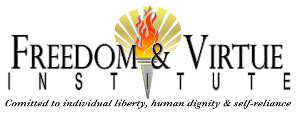Of the many abused terms in our society, diversity is a prominent one. In the minds of many, diversity is similar to taking a stroll at the local zoo to observe various species of animals or sitting comfortably at home to enjoy your aquarium. This taxonomical understanding of diversity is impoverished and tenuous. It is leading our society to lose respect for the person as we drown in an expansive yet shallow sea of color.
I’m a black Puerto Rican and my wife is African American. In contemporary diversity terms, we are covered! Years ago, my oldest daughter graduated in the top five percent of the class at a rather rigorous Catholic high school. (Don’t hate me for bragging about her a little.) It was exciting for her to start applying for college and one of her top choices sent her an invitation to a “scholars’ night.” You can imagine her happiness and pride in being recognized as a great student.
My wife joined her for a weekend at the university. The initial event was an evening reception and as they entered a large room, they noticed dozens of students already there. As the evening proceeded more students joined, but my daughter noticed something curious: only black and brown students were there. She blurted to my wife, “There are no white scholars at this university!”
“Cultural features do not exist merely as badges of identity to which we have some emotional attachment. They exist to meet the necessities and forward the purposes of Human Life” ─Dr. Thomas Sowell
Well, soon they discovered that most students there had extremely low-grade point averages. The “scholars’ night” was merely a ploy by “diversology” bureaucrats to meet their quota of us negroes there. In other words, they did not see her. They did not see my daughter as a unique and unrepeatable person whose academic effort deserved a hearing. All the bureaucrats saw was the right skin color. Boxed into a taxonomy, her moral worth dissipated. I am proud of her and my wife: They packed and left immediately—right after expressing to organizers the sadness they experienced at the disrespect and soft bigotry of low expectations.[1]
 Although such efforts are often couched in the rhetoric of justice for a deprived people and rationalized as a desire to prop up those whose starting line was way behind, they only accomplish the severing of the connection between reward and accomplishment that can only lead to success through struggle in spite of obstacles. Offering brownie points to “endangered communities” is not much more than degrading and condescending paternalism, however well-intentioned.
Although such efforts are often couched in the rhetoric of justice for a deprived people and rationalized as a desire to prop up those whose starting line was way behind, they only accomplish the severing of the connection between reward and accomplishment that can only lead to success through struggle in spite of obstacles. Offering brownie points to “endangered communities” is not much more than degrading and condescending paternalism, however well-intentioned.
The fact remains that we are not as different from each other as the diversity industry promulgates. There is no profound cultural divide in America that is not the product of the constant drumbeat that there is one. Yes, there are some differences in customs, accents, and ways of doing things but they are only balkanizing if we accept the progressive ideology behind the allegations of radical differences—an ideology that is not part of the culture of those deemed to be in cultural diaspora and must be imposed to convince them of the sad state of affairs.
The diversiphile worldview insists that we are not a melting pot because they want to conjure a salad bowl rooted in ideology.[2] As America was an experiment in ideas, they want to impose a new set of ideas to convince minorities that our land is far away, in a foreign Valhalla. They reject America as a common enterprise of common values. By instilling in our minds that there are fundamental differences at play, they can convince us that diversity necessitates a complete rearrangement of the body politic. The insistence on skin-deep diversity—that is, race—gives the diversity party a way to highlight some differences and ignore many commonalities—in the process filling the agnostic space they have cleared in our minds with gnostic knowledge of some imaginary “real” blackness or “Hispanicness. If cultural features exist merely as badges of honor to create barriers for unity, the creation of a diverse community is an impossibility. Culture becomes a weapon and diversity becomes an empty word.
What would be a clear and obvious diversity? Well, about 14% of Americans are of Hispanic descent. That is a fact. The fact shows a difference. But is that difference necessarily divisive? No. It becomes problematic when it is used as a tool, as a weapon to sever society into discrete groups with “proportional representation” everywhere. What is merely a beautiful expression of uniqueness within a society informed by inclusive monocultural features based on a common set of principles, is transformed into a radically divisive tool for power. Groups are competing for the same resources and one group is dominant over the others, making the struggle a dialectical one. As benefit derives from lumping individuals together, society is not unified but thinly pasted together with a substance that from the beginning was a lie to perpetuate the dominance of the majority group. This ghettoization of the entire body politic of necessity leads to separatism as the only solution.
Diversity also lumps people together when they often have very little in common. Take for example, the terms “Asian” and “Latino,” which cover such a variegated array of ethnicities, cultures, and religions. But the effort to divide us into warring camps now includes made-up words based on “gender” and those of us with Hispanic ancestry are suddenly informed that we are “Latinx.” Rearranging the whole society for the victims is offered to whites as their way of redemption for a past that is placed in front of them eternally. That past is a ticket to redemption for them and pyric benefit for us. Minorities become “endangered”, “different”, “special” because the status of victims confers benefit at the expense of being seen in the full scope of their personhood. The demands on them are daunting and the ones we place on ourselves, minimal. How else, for example, can we understand the attention given to cases of homicide by police in comparison to the virtual oblivion to the avalanche of internal community violence sweeping the inner city? If we can place internal community problems always in the context of the effects of systemic victimization, there is not much to do but to become political activists.
My friends, this is all an ideological ploy based on the dialectics of history that must find culprits and victims, oppressors and oppressed, expropriated and expropriators. In reality, diversity would be unsettling to the Marxists because when we, for example, study ancient cultures around the world they tend (with some exceptions) to be patriarchal and very traditional in mores and cultural and sexual ethics. This is one reason why liberation theologies developed in old Europe and are based on the thought of an elderly, anti-Semitic Prussian! The young seminarians at Tübingen and Rome concocted a theory that was in many ways at odds with the culture of the people they claimed to represent. With focused zeal, they descended into the barrios and favelas of Central and South America to snatch the culture and paint it with a veneer of ideology. After their indoctrination was all but complete, they suddenly claimed that the now-ideologized version of culture they imposed had to be respected by the colonial powers. We must reject this false diversity.


